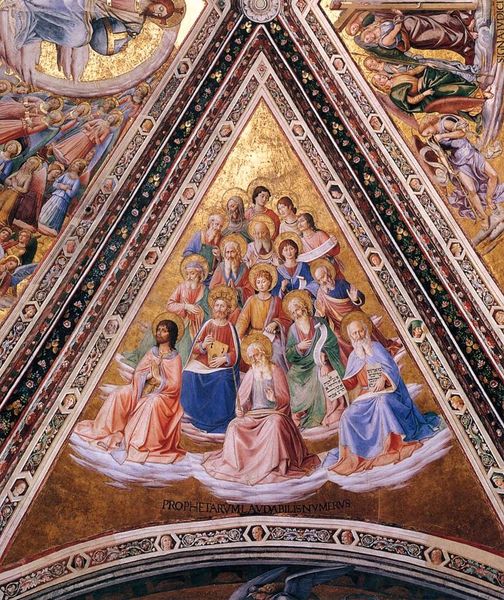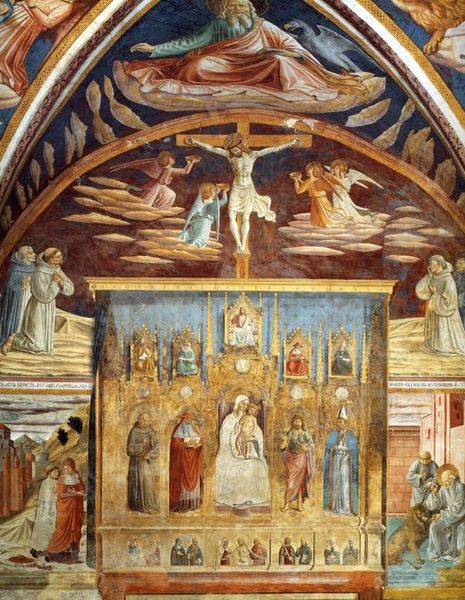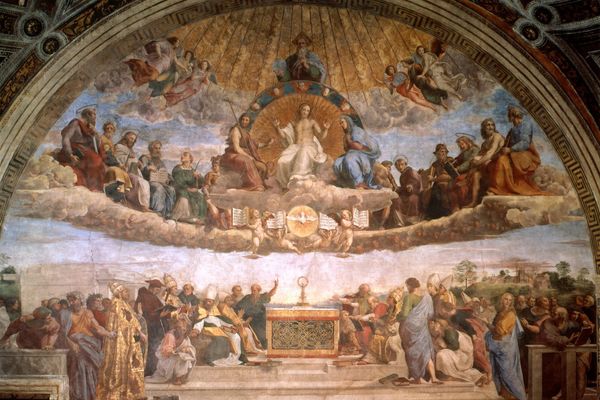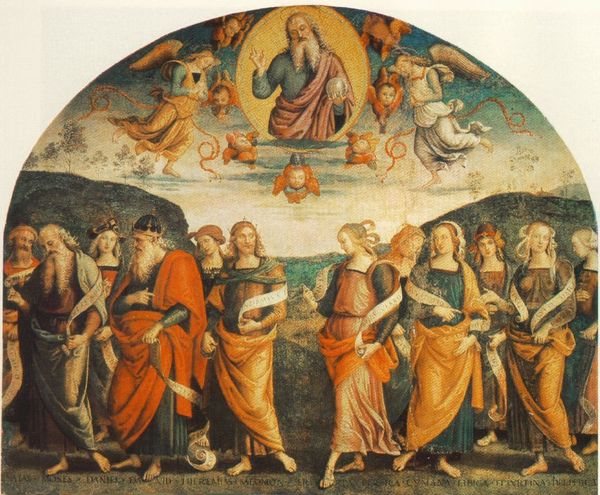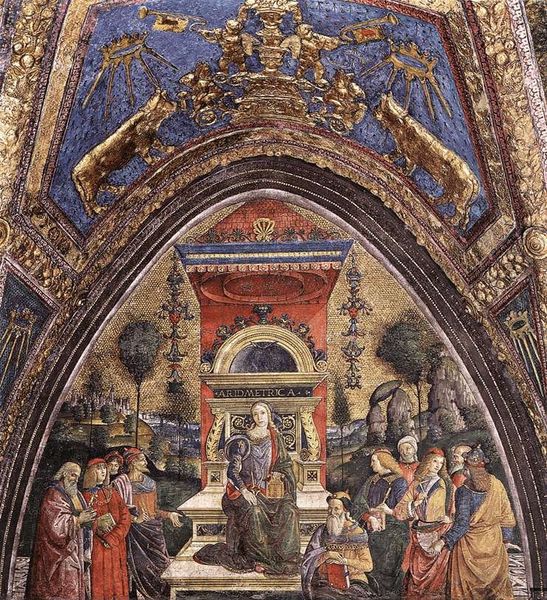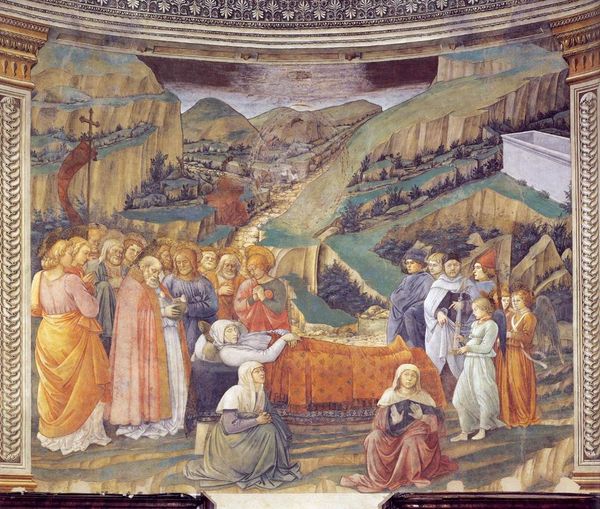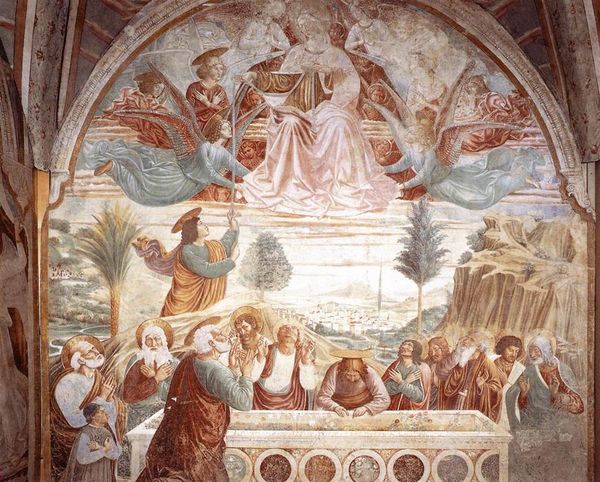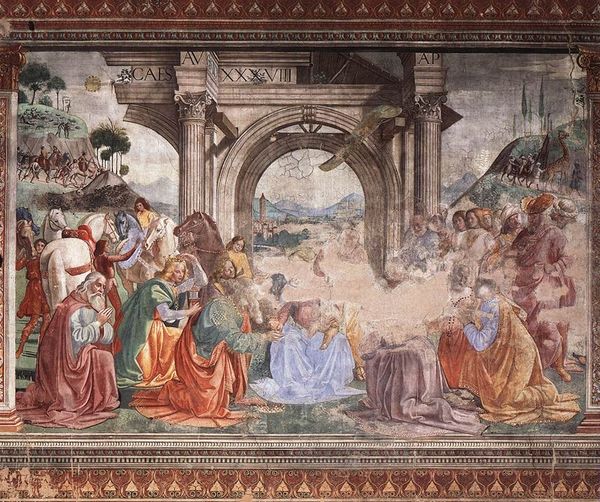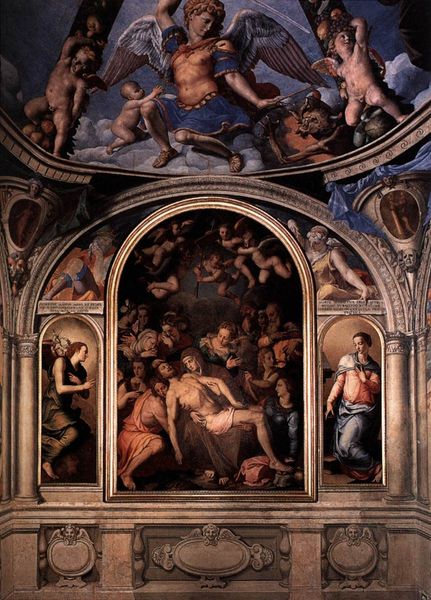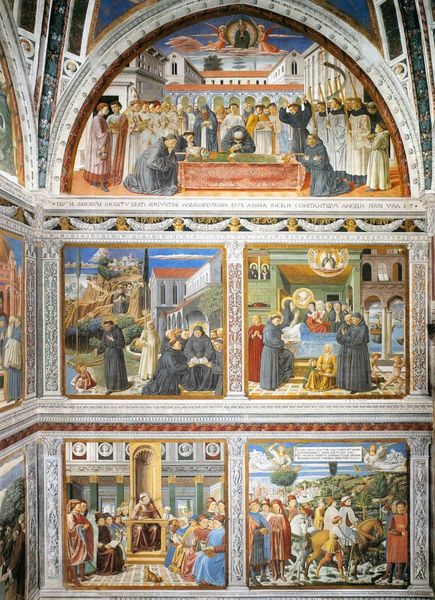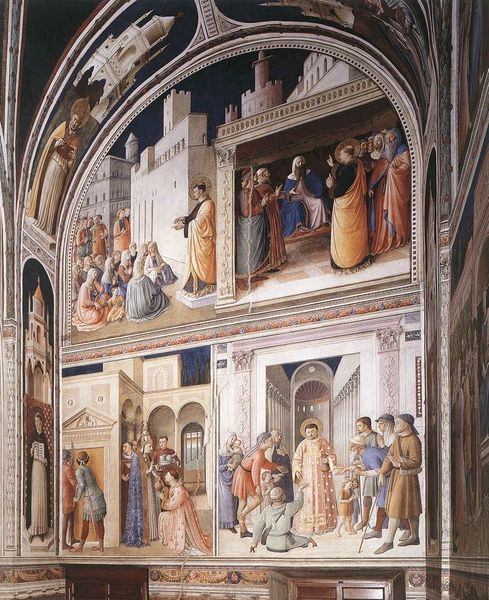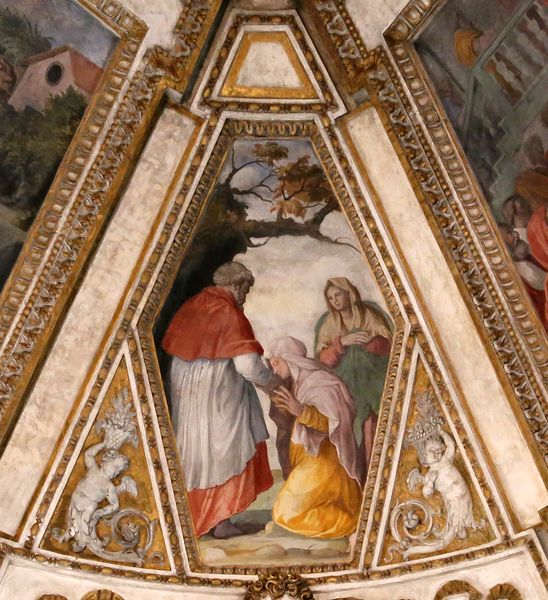
Death and Assumption of the Virgin 1490
0:00
0:00
domenicoghirlandaio
Santa Maria Novella, Florence, Italy
painting, fresco
#
painting
#
death
#
sculpture
#
landscape
#
historic architecture
#
fresco
#
traditional architecture
#
oil painting
#
christianity
#
italian-renaissance
#
virgin-mary
#
christ
Copyright: Public domain
Editor: Domenico Ghirlandaio’s "Death and Assumption of the Virgin," a fresco from around 1490, located in Santa Maria Novella in Florence, is just stunning. The scale is incredible. It is crowded with figures, but there's something serene about the landscape in the background. What story does this fresco tell beyond the biblical narrative, especially considering its placement in a church? Curator: That’s an insightful observation about the landscape’s serenity amidst the dramatic subject matter. Consider the historical context: Florence during the late 15th century was a hub of both religious piety and burgeoning humanism. Ghirlandaio, commissioned by wealthy patrons, often integrated portraits of contemporary Florentines into religious scenes. How do you think including these "everyday" people affected the viewing public's connection to the art and the Church itself? Editor: It must have made the scene feel very relevant. Seeing your neighbors or family in the fresco... it pulls the divine into the realm of the real. Almost like an early form of propaganda? Curator: "Propaganda" might be a loaded term, but it speaks to the active role that powerful Florentine families, such as the Tornabuoni who commissioned the cycle, played in shaping the public's visual understanding of religious and social ideologies. Frescoes like these reinforced the Church’s importance and also legitimized the patron’s status through displays of wealth and piety. The detail in the robes, the sheer number of figures—it all conveyed power. Editor: So it's not just about biblical stories, but also about projecting power dynamics? Curator: Exactly. By commissioning such a prominent artwork, patrons influenced not only religious doctrine, but also civic identity and moral standards. The Death and Assumption became an affirmation of their position within Florentine society. Now, knowing this, does the seemingly calm landscape strike you differently? Editor: Absolutely. It’s a backdrop, but also a stage. Thank you. I'll never look at Renaissance art the same way. Curator: That’s precisely what studying art history should do. Thanks for your perspectives.
Comments
No comments
Be the first to comment and join the conversation on the ultimate creative platform.

